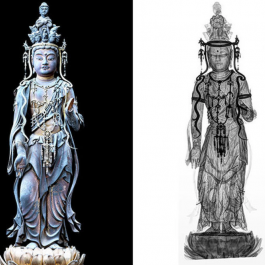
We click, we swipe, we tap. For some, all day long. Every day. I’m writing this article on a laptop. This is the reality for millions of people trying to earn a living, attend school, be influential, or connect. Or all of the above. We don’t always realize just how deadening, damaging, and limiting this relatively new way of life is to our bodies, hearts, and minds. With productivity, efficiency, and, most crucially, profits as the highest priority, people experience a slow numbing demise as their eyes, brains, hands, and bodies are used as repetitive machines of production at every level. This not only produces anxiety, social alienation, depression, addiction, and a host of other physical and psychological ailments, it separates us from our basic human needs and connection with the natural world, which in turn brings rapid aging.
In ancient China, and even into the 20th century, lingchi, death by 1,000 knife cuts, was implemented as a slow and cruel punishment for high crimes against the empire. Though not as obvious or torturous as lingchi, business as usual in our modern tech-centric society is also perilous to the human being, if rather more slowly.
What, then, is the medicine? Where is the antidote? It’s not hard to remember the analog experience of a few short decades ago: the interactive simplicity of neighborhoods, communities, families. It’s not that everything was fine, but the basis of civilization and culture was not digital, and therefore not so rapidly debilitating as an accepted norm. We have not completely lost our connection with one another, with nature, with the community, or with ourselves, but we now tend to see these connections as the exception rather than the rule—at least in mainstream workplace culture. The tools and healing methods to counteract digital dependency and our physical and emotional deterioration may be simpler than we assume. In workplace culture, we need to reinstate human and natural-world connection as norms rather than brief exceptions. Oxygen, light, breezes, stretching, and interaction promote productivity rather than deplete them. Some companies know this.

I recently spent a mere eight days working in a freezing cold, blaring fluorescent, windowless basement office. Rather than having a dedicated quiet workspace, employees moved about constantly, dragging their devices with them, leaving behind any semblance of ergonomic setup or continuity of space and place. It was chaotic, poorly planned, without a single living green thing to look at, no natural light, and little human interaction. Work was 97 per cent screen time and clicks. After only five of these days, I was at home one morning brushing my hair, when I felt stabbing sharp pain through my right shoulder blade. This stemmed directly from a host of repetitive motions. The constant mousing and clicking, even with an ergonomic setup, are brutal to the human musculoskeletal and nervous systems.
We have known for a long time that repetitive motion breeds illness and injury, and that the human organism needs a certain baseline connection to the natural world to function well. Short-term thinking produces long-term side effects that thwart productivity and therefore profits. It is just not a smart approach to business. Human beings are not machines or rapid-fire human doings!
We would never subject a dog or a child for even a half day to the kind of work environment I was in for eight days. Yet this was expected from employees day in and day out. In fact, people spend their whole careers in these kinds of hellish workspaces. It is no wonder they experience extreme depression, anxiety, social phobia, suicidality, and a loss of connection to themselves, to the planet, and to humankind, in addition to physiological distress.

I’ve seen exponential technological changes in my lifespan. My father worked on mainframe computers in the 1970s on the forefront of hardware and software development. If I stayed home sick from school, I would go with him to work and sit under his desk with a box of motherboard parts, from which I made collages and little sculptures. By the mid-1980s, we began to have personal computers in the home, clunky though they were, and by the 1990s we were accustomed to the personal laptop. Although I have used a variety of laptops since then, I still marvel at their poor design and the burden they place on our physical body. Laptops force us to crane our neck downward in an unnatural way, straining our eyes and our spine.
In the workplace, it is still common to see people working eight, 10, 12 hours every day of the week on a laptop, with a complete lack of ergonomic attention. This causes not only physical pain but debilitation of all the orthopedic, nervous, circulatory, psychological, emotional, and muscular systems. Physical therapists know this and massage therapists make their living working on clients whose bodies have been compromised by the computer and digital work environment. If I were to design a laptop, it would have drop-down folding legs on the underside to adjust it to eye level on a work surface and a companion lightweight wireless keyboard: voila! An instant ergonomic setup!
The advent of smartphones and our addiction to them has only deepened the abyss of physical suffering and bodily complaints based on the intensity of the texting and swiping. The whole complex of the eyes, skull, neck, shoulder, arm, and hand, not to mention the entirety of the spine and the whole body, are thrown off by engaging in these repetitive motions and postures. Many of us switch between cell phone, computer, and tablet in a nonstop race to do more, faster. Nothing has furthered this more than the Zoom era, in which we’re often using all three or more of these devices simultaneously, for work, play, connection, and entertainment.
We even rely on digital screens to check the weather, politics, or many things we used to access through books, newspapers, radio, and talking to other humans in real life, whether in the coffee shop, library, metro, or the workplace. Now, talking with others is discouraged in the tech workplace, as it supposedly reduces efficiency and productivity.

Leaving smartphones, laptops, or tablets behind is now a big challenge. Imagine going for a run, or a three-hour hike, or even a weekend, week, or a month without them.
Anyone who goes on a vacation or retreat, however long or short, has probably experienced a period of detoxification. It takes time for the urge to constantly check our devices to dissipate. And then it crosses over into a place of freedom: freedom to be in one’s body, to be in the environment, to be in the natural world. Whether or not one has contact with other people during a trip or retreat sans devices, we might feel that interacting with other beings, animals, the weather, and the environment to be a refreshing reminder of our animal-human nature. A return to using our senses. We’ll likely sleep better, have more original thoughts and ideas, and see our creativity return.
It is also a renewed opportunity for cultivating the vast inner environment of visualization or daily meditation practice. Simply resting in awareness or in formless meditation, just being in the human body in its natural state, we reclaim sitting, walking, eating, and sleeping as our birthright experiences. They are enough. We do not need to incessantly produce. Resting, reading a book, being with others, in some ways these feel like lost arts, the arts of simply residing in bodily form, without dependence on furniture, devices, or technology. Going to the mountains, beach, lake, or family getaway were places once to leave phones and work behind. Now we expect, and are expected, to be constantly in touch, available, on. Like the ON buttons of our life that are never powered off.
Technology brings us many advantages and benefits, but our insane dependence on it, and our multiplying fears about AI and virtual realities show we have forgotten that the internet and computers and smartphones and tablets are tools, not our essential habitat. We wouldn’t carry around other kinds of tools all day long and constantly look at them. Unless we happen to be a carpenter or a gardener or a builder or a sculptor or a cook, then yes, we would often engage with our tools. But these are mere extensions of our physical body rather than overwhelmingly dumbing down how we embody our physical form, mental awareness, emotional and psychological experiences, and our connection to spirit, whatever that may mean for us. I don’t imagine the carpenter, chef, gardener, or roofer taking their tools into the bathroom, the bedroom, the pub, or to bed when off duty.
We need a shift in our extreme reliance on, and use of, technology toward integrating more natural forms of movement and posture in the workplace. We need to integrate light, air, views, and camaraderie at work, to bring life back into these bodies! Tending to and preserving the body will have positive effects on workers’ long-term ability and interest in performing well. Quality of life relates directly to quality and quantity of work production. And, enjoyment and wellbeing are birthrights all human beings have, no matter what kind of work we do.

Related features from BDG
Buddhistdoor View: The Temptation of an Easy Path in Technology
Technology, Mind, and Dharma
Further Reflections on Technology and the Buddhist Teachings
On Being Brave: Dzongsar Khyentse Rinpoche on Technology and the Dissemination of the Dharma
Transformative Technology as the Path Forward for Humanity
On Technology and Human Connection: An Interview with Ajahn Brahm












